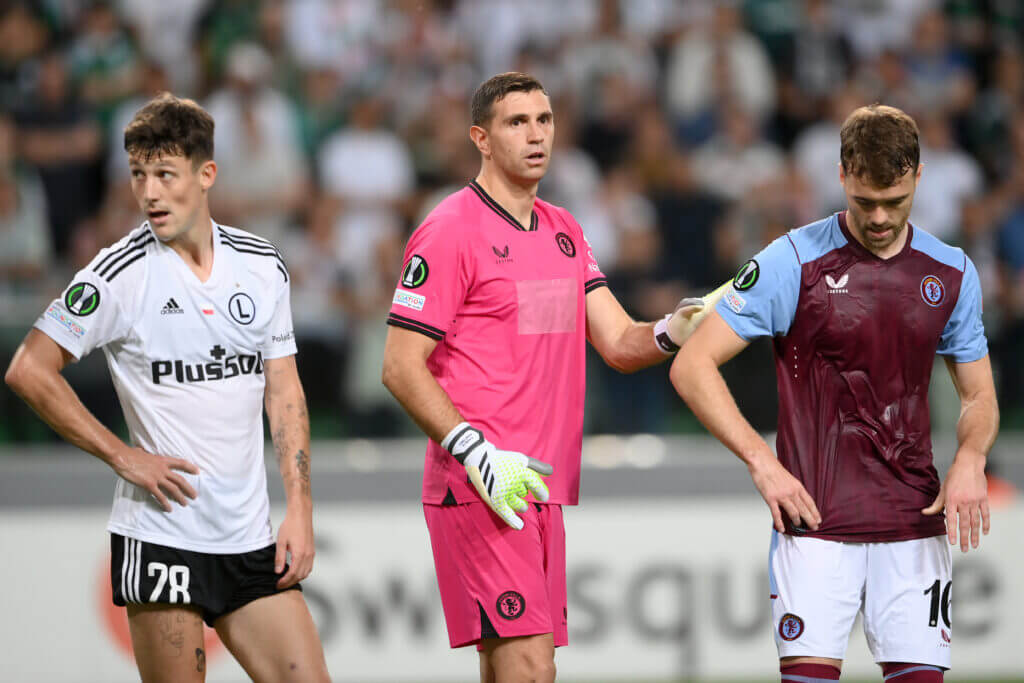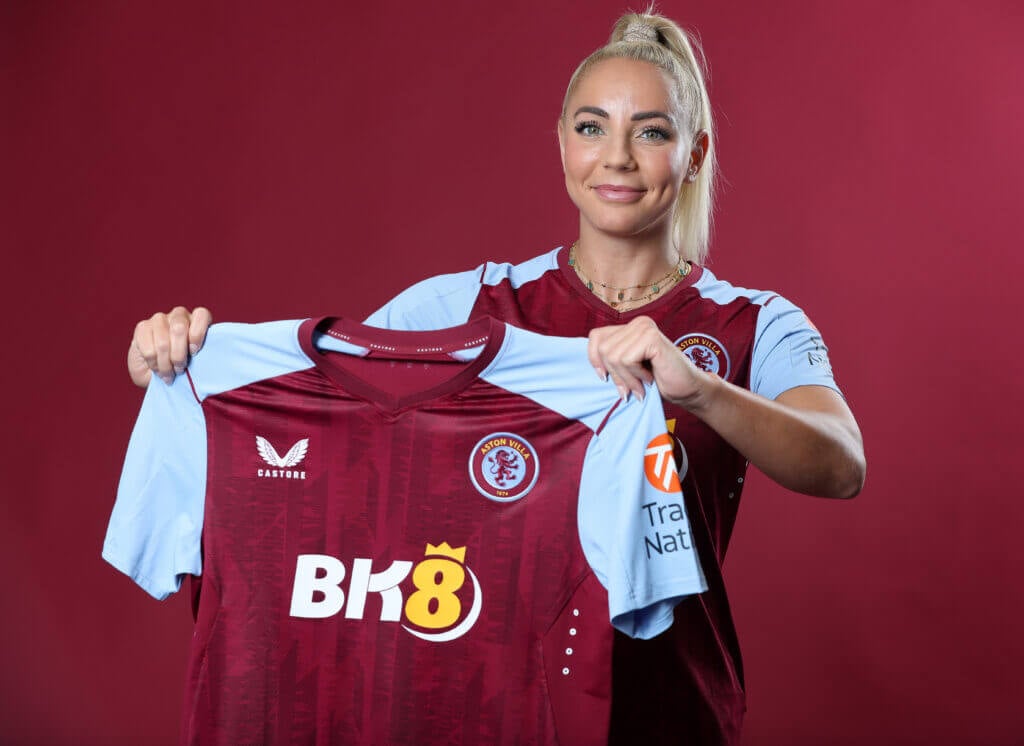British sportswear brand Castore — the so-called “big disruptors” in the kit supplier industry — is facing increasing pressure from one of its top clients, Aston Villa.
Complaints have been lodged about the quality of this season’s shirts, specifically on the wet-look issues that are affecting performance.
Advertisement
Members of Villa’s men’s and women’s teams have stressed that the shirts become too heavy during matches and are weighing them down.
Some of the “uncomfortable” training kit has also come under criticism from the players who, through close contacts who have asked to remain anonymous to protect relationships, have told The Athletic about the issues.
Villa are into their second season with Castore after signing a multi-year deal in 2022 but are now deeply unhappy and demanding answers. Newcastle United, meanwhile, are cutting short their contract with the brand and moving to Adidas next season — although that is due to the lucrative nature of the new deal.
The “speedboat in a market of oil tankers” — a description used by co-owner Tom Beahon when describing Castore’s attempt to go head-to-head with global giants Nike, Adidas and Puma — has now entered into choppy waters. So what happens next?
How did it start?
Villa’s first season with Castore was recognised as a success as they moved away from a three-year partnership with Kappa.
After establishing themselves back in the Premier League, Villa wanted to build bigger and better sponsorship deals and recognised Castore, a quick-moving brand, as the ideal switch.
By this point, Castore was already making huge strides after teaming up with tennis star Sir Andy Murray, the England cricket team, Rangers and Newcastle.
But it was during this summer’s kit launch that the problems started. Throughout pre-season, it became clear that the claret-coloured home shirts were becoming much darker during games and in training. Players raised the issues early, saying that the shirt, made up of 90 per cent polyester and 10 per cent elastane, was “saturated” and not able to absorb sweat efficiently.
They were, however, prepared to wait until the warm summer temperatures dropped before passing final judgment.
Advertisement
Yet images from recent games show the problem has persisted and The Athletic has been told that some players believe it is having an impact on how they perform because of the distraction. “It’s absolutely horrible to play in,” said a contact close to a men’s first-team player. They added that shirt-changing requests had spiked significantly during games this season.

Members of Villa’s women’s team agree and have additional concerns about the appearance element before their Women’s Super League opener against Manchester United on Sunday. The shirts often leave large sweat patches above and below their breasts, which are protected by sports bras during games.
Many players have also said the shirts are uncomfortable to play in because they cling too tightly to the body.
The issue has not had an impact on the £70 ($85) replica shirts bought by fans, though, so Villa are not facing the possibility of having to recall kits or issue replacements to the public.
Have other clubs had issues?
Not with the wet look and the issue of it sticking to the body. But ripped shirts have been a problem experienced at some of the other clubs Castore produces kits for — with noticeable examples at Newcastle, Wolves, and Rangers. Anthony Gordon, the Newcastle winger, had his shirt ripped on Sunday but that was not seen as anything unusual.
Huge rips have left some players with their shirts literally hanging off their bodies, which has led to questions about the quality of the production.
Typically, players swap shirts at half-time to create a fresher feel before the second period in a game but, because of the issues already mentioned, changes are occurring more often.
Last season, a printing malfunction also left Wolves with a batch of shirts featuring an upside-down club badge. Defender Nelson Semedo was seen twice wearing a shirt with the club’s crest positioned the wrong way around.
Advertisement
There are also concerns about the and distribution of fan shirts at Newcastle.
There have been errors by major kit makers elsewhere.
Take, for example, the error made when Adidas manufactured the new Arsenal shirt celebrating the 20th anniversary of the Invincibles season. Sales were suspended because details of the record-breaking 2003-04 season were printed incorrectly on the shirt.

What happens next?
Villa want a shirt that absorbs sweat, remains lightweight and is comfortable for the players as a matter of urgency.
It has become an unnecessary distraction for a club heading in the right direction under Unai Emery, with four wins out of six in the Premier League.
A quick fix, however, is unlikely. Kits are often produced six to eight months in advance and there is no shortcut.
The suggestion that Villa could use the replica shirts on sale in the club shop during games is also unlikely to be explored. Replica kits are usually heavier than the professional version, so this could have an even more negative impact on performance.
Castore, which has huge deals in place with other sports clubs and elite athletes, has declined to comment.

What’s the legal view?
Villa’s main focus is finding a quick solution and giving their players the best opportunity to perform to the best of their ability. That’s the only focus.
Andy Brian, a commercial contracts lawyer and partner at law firm Gordons, told The Athletic: “The key question will be whether the club’s agreement with the manufacturer contains a detailed specification of the products to be supplied and, if so, whether that specification extends to the composition and weight of the products.
“Typically, manufacturers will supply one spec of product for replica kit sales, and another more high-performance spec for the athletes to wear.
Advertisement
“If the supply contract contains a detailed spec that is not being achieved, then it will be pretty straightforward to resolve; Castore will have to supply according to that spec. I don’t know what this contract says, but perhaps the more likely scenario is that Castore is supplying products that do comply with the contract, but Aston Villa are not happy with the quality.
“Realistically, it will likely be resolved commercially, but it’s pretty embarrassing.”
(Top photo: Getty Images)

